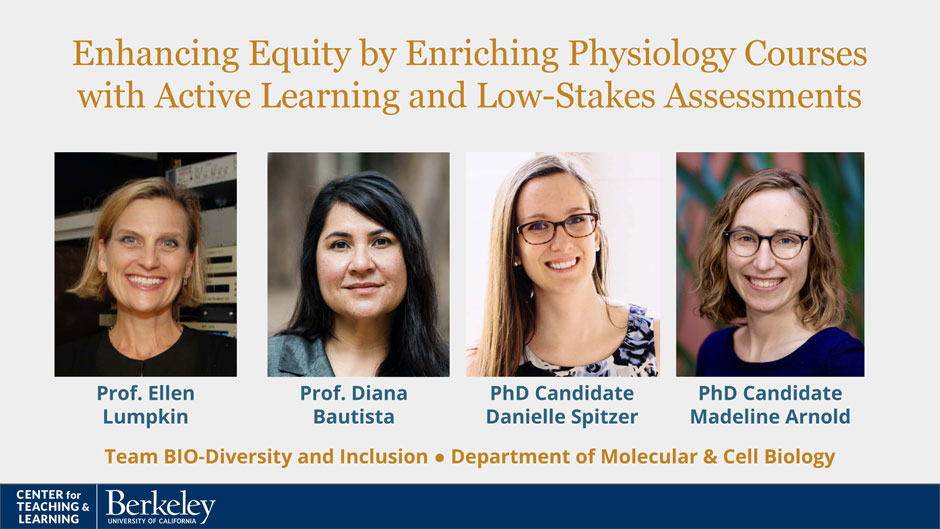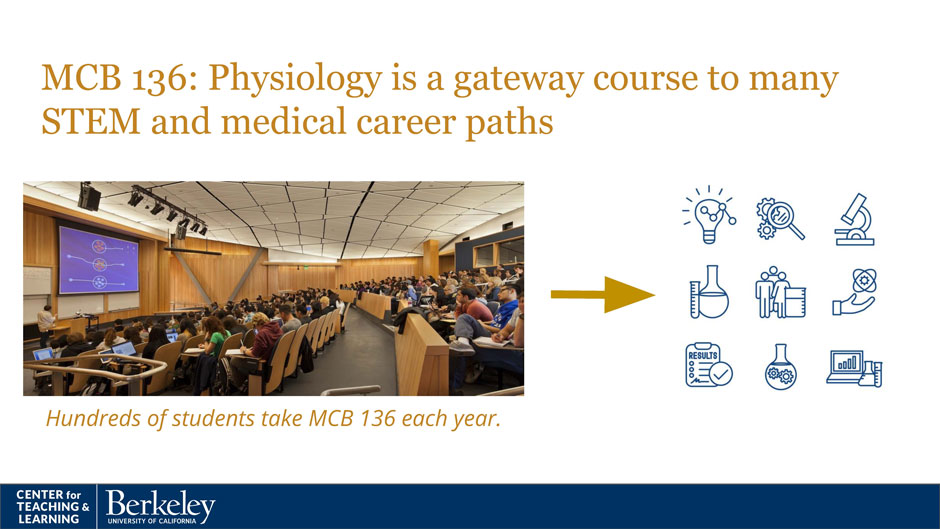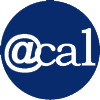
Phixing Physiology
Course revamp trains students to think like scientists
By Sophia Friesen

Think of a large-enrollment class and you might picture a cavernous lecture hall, full of students silently taking notes as the distant instructor imparts wisdom from the front of the room. Learners are expected to absorb knowledge passively; problem-solving and critical thinking are reserved for independent study, or for a few high-stakes exams. It’s not the most thrilling learning environment, nor – as extensive research has shown – is it a particularly effective way for students to learn.
But a team of MCB faculty and grad students envisions a different way of teaching, where even large classes have the potential to engage every student. Now, aiming to train a diverse group of scientific thinkers, the team is flipping the script and redefining what a large-enrollment course can be in MCB’s 150-person upper-division Physiology class.
The course redesign, powered by the prestigious Presidential Chair Fellows Grant through the Center for Teaching and Learning, includes an ambitious suite of changes all designed to make the course more equitable, effective, and engaging.
One critical change made by instructors Diana Bautista and Ellen Lumpkin, the faculty leaders of the project, is to spend less class time lecturing and more time having students actively engage with course material – whether by working problems, running simulated experiments, or analyzing the current literature on a course topic. “For an advanced course, it’s about more than having students just spit back facts and figures,” Bautista says. “We want them to start thinking like scientists and applying what they learned in a new way.”
Moving away from pure lecture is a well-established strategy to increase learning and equity, say MCB PhD candidates Madeline Arnold and Danielle Spitzer, who contributed to the course redesign as graduate student assistant researchers. Spitzer explains, “In courses that incorporate any amount of active learning, you see lower failure rates and higher overall exam scores. Additionally, it can reduce some of the observed achievement gaps between students who are underrepresented in the sciences and those who are well represented.” In other words, active learning benefits all students and helps level the educational playing field.
To make more time for in-class activities, Arnold and Spitzer designed guided reading questions that help students learn background information before class. The questions show students what to focus on in a text and check their understanding of prerequisite concepts. By setting clear learning goals, Arnold says that the guided readings will make studying more efficient and equitable. “Anything we can do to make it more clear to students what we want them to know will help with equity. Especially, for example, for first generation students who are navigating this whole system for the first time. Or even students that have to go to work outside of class, making everything more streamlined, so that they don't have to do lots of extra work.”

Another aspect of the redesign is a focus on many smaller-stakes assessments. While huge, stressful exams are the standard for large lecture courses, “it doesn’t have to be that way,” says Bautista. Many smaller assessments give students more ways to show what they’ve learned, and help instructors know what kinds of instruction are working well in order to make further tweaks.
The four-person student-faculty team has already made sweeping changes to the course, but the work is far from over. The team hopes to see continued improvement to the curriculum, not just within Physiology but for other MCB courses as well.
“I do hope that there can be a blueprint for other folks,” says Arnold. Despite the work involved in restructuring a course, Bautista is excited about the possibility that such changes could spread more widely. “Figuring out how to do that for all the classes would make things better for our students—and for the faculty, too,” she says. “It’s a really fun way to teach!”
Because teaching styles have consequences for equity, Spitzer sees a moral urgency to make similar changes in courses across the department. She explains, “There's such compelling evidence that we have the ability to either exacerbate or fix inequality in undergraduate education through the way that we structure our courses and the way that we teach. And as educators, it's our responsibility to act on that.”
Revamping a course to focus on scientific thinking is no easy task, but it’s work that Bautista speaks of as well worthwhile: “It’s not memorizing all the facts, but really applying it to unknown questions. This is what students who are graduating with a degree in MCB should know, should be able to do. This is the part of science that I love.”
Banner image: Wheeler Hall. Credit: Irene Yi
Back to Main Fall 2022 Newsletter Page
| Connect With Us! | ||||
MCB Twitter |
 LinkedIn Postdocs, PhDs, or Undergrads |
 Cal Alumni Network |
 Give to MCB |
|
